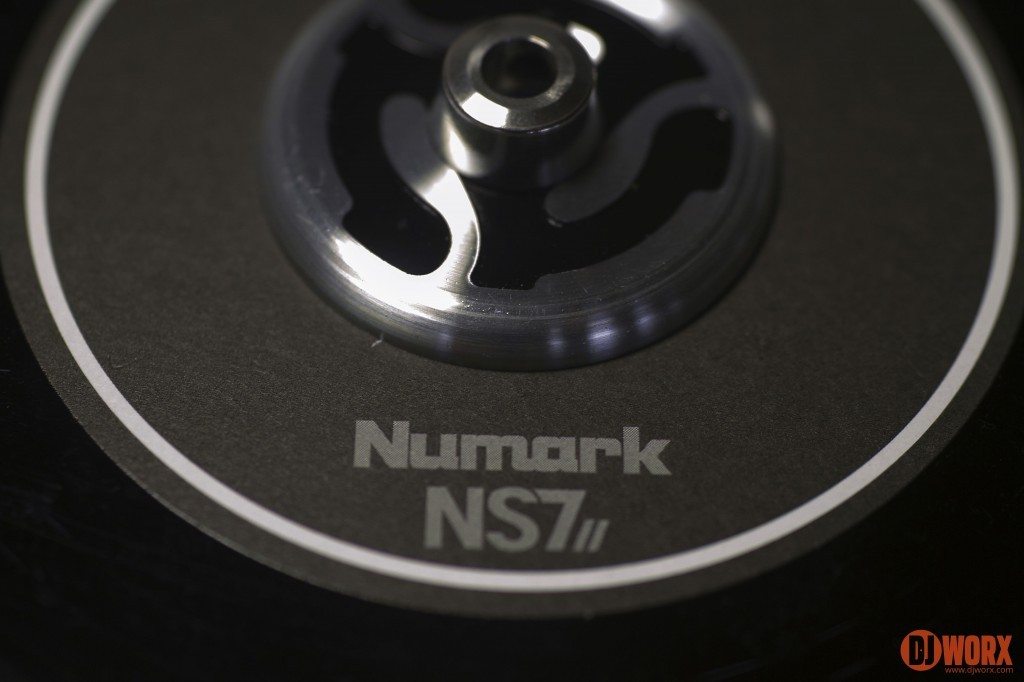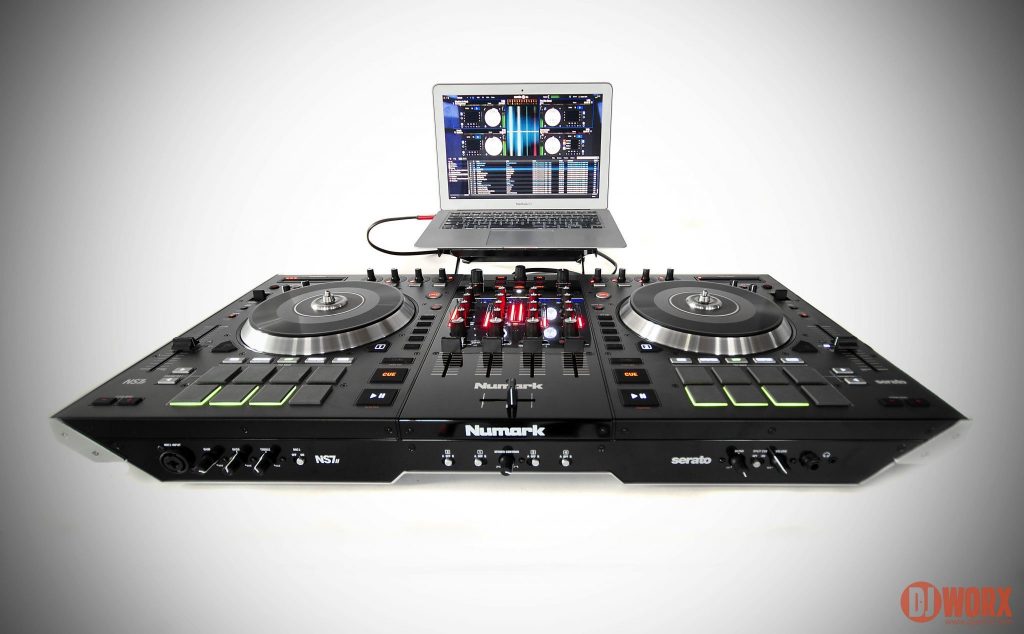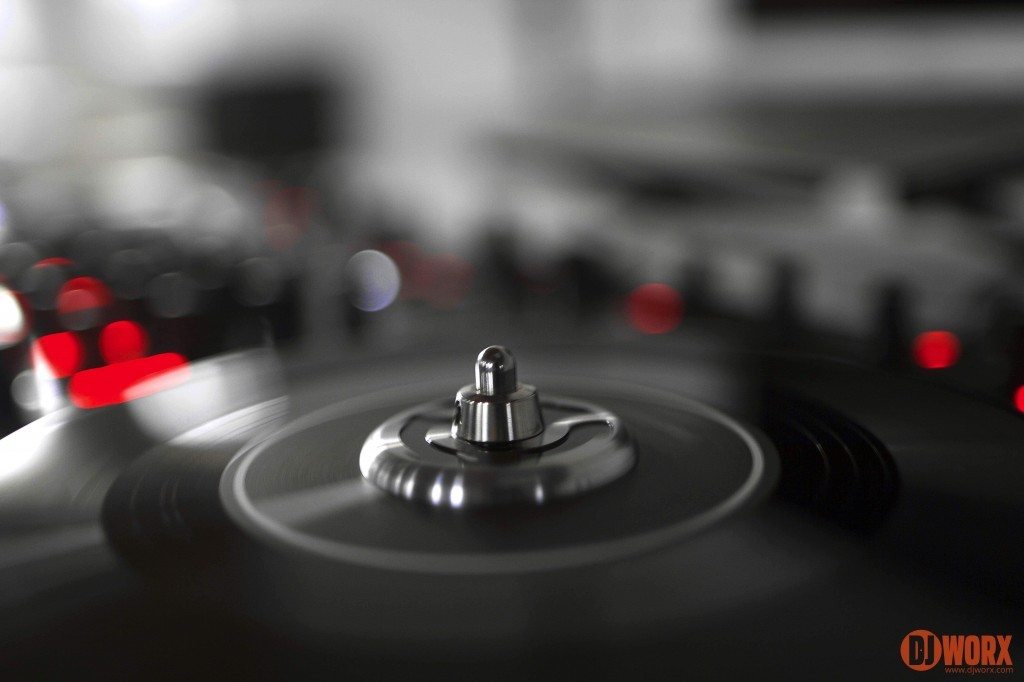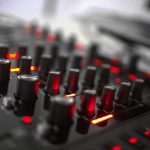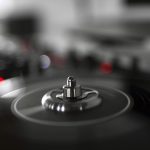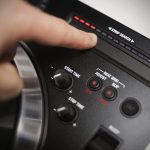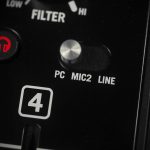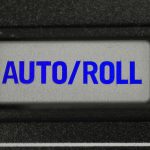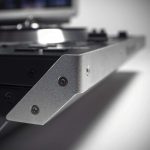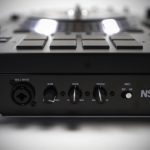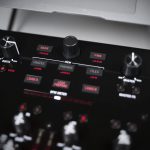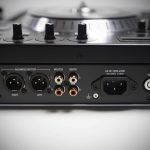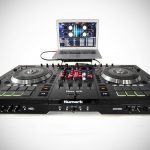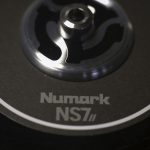Link: Numark — Price: $1499/€1199/£999
Introduction
The controller age has heralded a revolution in the DJ industry. But it has also brought with it 2 opposing mindsets — a constant craving for more features, juxtaposed to a hankering for less physical controller. The two ideals smash head on and generally mix like oil and water. So rather than compromise the ideal top of the food chain feature set, Numark said “screw it — we’re super sizing this controller”, thus the NS7 was born.
But we’re now at sequel stage, and the long teased Numark NS7II has finally hit the market, with a Serato DJ based feature set to die for, all encased in a no-compromises titan of a controller. It takes just about everything the GAS sufferers crave and crams it all into an epic 4 channel box that stands alone in its epicness. As a self-confessed NS7 lover, I have patiently waited for the day to come when one of these would pass my way again, and that day is here. So let’s get into it.
In A Nutshell
The NS7II is a followup to the original Serato ITCH based 2 channel NS7. It has the same form factor, the same heavy metal build and the same 7″ motorised platters, so your investment in bags or flight cases is safe. The most notable updates are the RGB pads below the platters, 4 channels and built-in effects controls. So rather than having the separate NSFX unit, it’s entirely self contained. There are also very cool features like capacitive knobs, but we’ll get to that later.
As before, the NS7II is capable of operating as an analogue mixer, and allows you to run a DVS through the inputs, but you must still have the necessary audio interface to run Scratch Live or Traktor.
To get the fullest picture of the Numark NS7II, it’s best to go visit the NS7II mini-site, and read the manual. Once again, it’s important to underline that we’re not here to spell out every minute detail of what the gear does, but to give you our opinion about how well it does it.
First Impressions
The first impression is one of size. Not just sheer physical size (multiple large Russian doll style boxes did not help me move this around the worxlab), but weight as well. In my first look piece, I commented that it was the heaviest controller on the market, and was quickly corrected by Numark that it was actually a little lighter that the old NS7. I guess the 3 years since release has taken its toll on my body, and the additional flight of stairs into the worxlab didn’t help either. Maybe, just maybe as the saying goes, I’m getting too old for this shit. ;)
Having established that this is a beast, let’s move onto quality. Full metal jacket is an apt description, as the NS7II is one large metal box, from the heavily air-vented base (yes there’s still a fan in this as well) to the side and top panels. There’s also a good number of Allen headed screws holding this together, none of which compromise the look or feel.
The brushed steel of the former NS7 has gone, leaving a matt anodised faceplate on each deck, and a not-quite-but-still-shiny glossy faceplate for the mixer section. Thankfully, it doesn’t glare or become a fingerprint magnet like the NI Kontrol range does. For the record, we will never stop mentioning that at every opportunity.
The controls continue the high quality theme. Unlike Numark’s more budget friendly range, the majority of the buttons are backlit rubber with a hard plastic trim, meaning nothing wears off through use, leaving just the smallest buttons as low profile hard plastic. The colour scheme, like its predecessor is all black with red and white backlighting. The red is vivid, but I found the white lights to be pretty dim. The 1 and 3 deck indicators in particular barely look to be on at all.
One thing we all commented on was that the play/pause buttons felt unresponsive. I however spent 5 minutes being quite heavy-handed with the play buttons, which did seem to break them in nicely.
The knobs are a mixture of rubber and plastic. Most are small, leaving the filter and track loading controls as more precise larger ones. It’s also worth noting that the majority of knobs are metal shafts, and all are nutted to body, further indicating the no-compromise approach to quality with the Numark NS7II.
Overall, the NS7II is built like a tank. I tried to find something from a quality perspective that I was unhappy with, and failed. Even the normal Achilles heel of pitch faders are quite sturdy. And I wore a flat edge on my thumb nail trying to scratch the screen printed markings from the fader area.
If you’re clinging onto the memory of Numark equating to low quality — forget it. The Numark NS7II is an uncompromising bulletproof beast. DJ-proof though? That remains to be seen. Some of you guys are animals with DJ gear.
Layout
As discussed in other DJWORX reviews, controller layouts tend to adopt a fairly standard 2 decks and a mixer layout, with effects largely being a strip across the top, and track loading in the middle. And the NS7II doesn’t stray too far from that established standard.
The NS7II is entirely symmetrical. While many lament that it’s not like separate turntables and mixers, I actually prefer this layout. I and apparently other users did suffer real issues on the Pioneer DDJ-SX (the obvious comparison) because of the pitch fader in the middle. And our brains are wired to deal better with symmetry too.
One thing — I’m finding that with the increase in shift functions on units, there needs to be a second shift button (perhaps where the Serato logo is now), that will allow for more one-handed operation of these extra functions.
Overall, everything is where you would expect it to be, and the workflow is good, once you get used to the locations of some of the features. Again, I keep banging on about how the brain is wired, but it’s key to human interface design, and some of the positions feel a little random and off-grid.
Decks
Let’s talk about the overall deck units first. Dominated by the platters (more next), the decks come complete with just about every control and function you could wish for.
Pitch first — the NS7II has a pretty sturdy 100mm pitch control with a grip friendly rubber knob. There’s a 3-4mm zero area but no zero detent — you’ll have to decide if that’s a deal breaker. I prefer it without to be honest. And if using 4 decks, there are white arrows indicating pitch takeover. All pretty standard stuff really. Below the pitch are the pitch bend buttons, which offer a solid performance without any sudden speedups or slowdowns. You can also switch off the jog wheel motor and use the vinyl for pitch bending, which does rather defeat the whole point of buying a Numark NS7II really.
Serato DJ offers pitch ranges of 8, 16, and 50% as well as the now essential master tempo. Given Serato’s Pitch ‘N’ Time heritage, I could only pitch down -10% before the audio became too messy to use. Come on Serato – you’re way better than this.
One thing to note — I found it easy to confuse the hell out of Serato DJ 1.5 when switching pitch ranges. If you change the pitch range when the fader is at 0%, everything is fine. But it’s when the fader has been moved where the problems start. Serato need to have a look at this.
Platters
The obvious draw that differentiates the NS7II from every other controller are the 7″ motorised platters. Plonked squarely in the middle of each deck, they dominate the units in fine style. They are the reason I loved the original NS7 so, and provide the ideal middle ground between static jog wheel and full blown turntable. Assembling the platters offered no real differences from the original — it’s still an Allen screw that holds the vinyl to the motor spindle, giving you plenty (if fiddly) adjustment on how well the vinyl spins on the supplied slipmats. Trial and error delivered the expected excellent vinyl-like performance.
You can of course add your own 7″ vinyl and slipmats, and indeed many existing NS7 users do just that. I find that the weight of the supplied vinyl is perfect once the spindle tension is adjusted. From a personal perspective, I wish the vinyl extended a few millimetres more beyond the edge of the platter. It makes some scratch techniques that little bit easier.
The Numark NS7II also offers switchable torque. It’s a nice thing to offer, but in reality, the low setting still feels stronger than most turntables I’ve ever used. There’s also start/stop adjustment controls, with something like a 3-4 second spin down and start up. I get the spin down, but I’ve yet to find a need for start speed control. I’m sure someone will inform me of the essential nature of start up speed adjustment in due course.
On the deck side of things, the NS7II also gets slip mode. Made popular on Pioneer’s CDJs, slip mode lets you go crazy with the platter, and the minute you let go, the track will resume playing where it would have been. It’s a cool feature to have, especially on such a scratch friendly unit. And there’s the usual reverse and bleep (instant reverse censor) as well.
I’ve become quite a fan of the strip search as well. It’s used to navigate your way through a track, but I find it most useful to get right back to the beginning without having to worry about cues. It’s not too accurate though for fine tuned track scrubbing — it does rather lose its way if used too slowly.
Deck functions aside, from a controller perspective, the NS7II platters are perfection. Super responsive, high engaging, and huge amount of fun. I love them.
Mixer Section
The obvious big difference between the Numark NS7II and its predecessor are the 2 extra channels. But it’s not just the number of channels, but how they’re implemented. This time around, all channels get their own post-EQ/pre-fader meters and filters.
The layout adopts a now standard 1 and 2 in the middle and 3/4 on the outside, with each channel switchable between line/phono, mic and PC i.e. Serato DJ channels, with a cue button right next to the switch. I’m very happy to report that split cue is supported on the NS7 II via a switch, and comes with a knob for fading between pure cue and master, all done post fader, EQ but pre-effects. And be in no doubt — the cueing is loud, ear-bleedingly so. No need to worry about quiet headphones here.
The faders are all standard Numark fodder – 45mm throw line and crossfaders, with the latter being a heavier and slightly smoother CP-Pro as found in the NS7. This however can be replaced should you break it with another CP-Pro, but I’m unsure about any other fader at this point. I’m sure Elliot Marx will be able to shed light upon Innofader connectivity after seeing the photos.
The crossfader curve is supported on a hardware level from dipped in the middle to a 1mm cut-in distance. The line faders get a software curve but no reverse, and the crossfader gets a software reverse, which can also be replicated with crossfader assign switches, which allow each channel to be fixed to either side of the crossfader, or indeed play through. I know I’m going to miss the line fader reverse though, as will a lot of more scratch based DJs. Can we have it in software Serato pretty please?
The navigation section at the top offers a pretty standard experience, and soon had me not reaching for the trackpad. This is enhanced with shift functions that allow for library sorting, something that is especially useful for those who mix by BPM.
All of this is pretty standard stuff mixer-wise. But it’s the silver topped knobs that need a section all of their own to explain.
The Capacitive Knobs
What does set the Numark NS7II apart from the crowd is the use of capacitive knobs. This means that as well as changing a parameter when turned, they can also respond when touched. As we’re still talking about the mixer, we’ll confine ourselves to the EQs for the moment. In default operation, the EQs range from full kill to +6dB, or to +12dB via a switch in Serato DJ. But if you press a shift button, and then an EQ button, that EQ range kills for that channel. And if you press shift and the “touch” button on the left hand deck, this kill behaviour is locked on so you don’t need to keep the shift button pressed.
It’s all very clever stuff, and very much in my current mindset of not adding more, but making what you have work smarter. It’s not a kill button exactly, but can be a creative variation on the theme. I’ve never been in need of kill buttons, and actually find this approach more useful. There is an issue with a clicking when using touch EQ kill on the bass knob, which will be effectively passed back to Numark and Serato when they read this draft.
Having touched (you see what I did there?) on these, we probably should move to effects to see what else the capacitive magic can bring.
Effects
While prepping for this review, the structure of this article puzzled me somewhat. I had planned an even split between hardware and software, but effects are one area where both areas squarely overlap. It’s also an area where Serato DJ is leaps and bounds ahead of the previously ITCH enabled NS7. Since getting the iZotope effects injection, Serato DJ is rightfully sat at the grown ups table.
Covering off the basics — there are 2 banks of 3 effects that can be applied to each channel, and each bank can be applied to the master as well. These 3 effects can be turned into 1 effect with 3 different parameters, giving you a lot more control over the nuances of the effects. This does all take a little while to get to grips with, but these are a world away from ITCH.
In terms of physical control, the Numark NS7II offers 3 rotary encoders for the effects, plus a notched encoder for the beats parameter. Each effect or parameter can be turned off or on, and switching between bank modes is enabled with the shift beats button. Again, this is a tried and tested workflow so there are no surprises at all. The effects also have a muscle memory, so that when switching between modes, it remembers what was in the slots before, even if they do switch the wet/dry back to zero.
I’ll also give this its own paragraph for the hard of reading — all effects are post fader, thus echoes, delays and reverbs don’t come to a sharp end with a closed fader.
The innovation happens with the touch encoders. Just like EQs, the effects encoders work normally until you use the shift touch command, at which point they become instant touch effects. And pulling the mixer element back into this, the filter knobs can work in 2 additional ways that tie in neatly with effects. Pressing the filter roll button makes the filter loop roll, and shift and filter roll changes the parameter on the FX1 effect applied. It’s very clever, but does rather depend on you remembering which effect you’ve got in FX slot 1 of course.
There was a time when it wasn’t too tough to pick holes in ITCH’s effects implementation, especially when an external unit had to be attached to enable them. But now, thanks to Serato DJ and iZotope, it’s quite hard. Many will compare Serato DJ’s effects with Traktor, and claim that they’re still not close. But for 95% of the DJ market, these effects are ideal. Less is more with effects, and let’s not forget that additional effects packs are being released for Serato DJ via their plugin architecture. Traktor cannot do this, and I imagine that all manner of craziness is just a download away.
The Pads
The other real difference aside from 4 channels is the inclusion of multi-mode pads. With each iteration of new Serato partner software comes a new version of these pads, and while similar to the ones seen on the Pioneer DDJ-SX, these are some way in advance of those.
But first, we must also cover off what I suppose you could call the native NS7II pads. Inherited from the original NS7, these are small regular rubber pads, that while capable, don’t quite match up to the proper velocity sensitive Akai MPC pads, which are very capable of taking a battering. They’re also RGB pads that change colour with the selected mode. Why 2 sets of pads? Well why not? Hot cues are your locators thus vitally important, and if you’re off doing something else with the big pads, then at least you can still get to your hot cues elsewhere. It’s a smart move.
Each pad has 2 modes as well, giving you double the hit for your cash. The modes all have different colours as well and are as follows:
Cues: 8 cues that can be defined by hitting in the right place, deleting with a shift hit. The second mode is cue looper, that when engaged loops from the cue point until you press gain. The amount of loop can be varied with the parameter buttons from, 1/32 to 32 beats. Note: a tad annoying that you can’t see all the hot cues in Serato DJ in one window, and that they don’t have the names as seen in Scratch Live.
Auto/Roll: Self explanatory for most, but the 8 pads offer immediate auto looping and rolling (slip auto loop), which like cues can be crunched or expanded with the parameter buttons.
Loop: This is where things leave the beaten track a little and does need a read of the manual. The 2 modes are essentially the same, but make for 2 banks of loops. Manual loops are stored in the top 4 pads, and the bottom 4 pads define the loops. These are manual loops though, and not fixed to any grid that I can see. It’s the kind of thing that is best done before the gig, as I found making a neat loop pretty hard.
Sampler: Triggering the button once plays the sample as you defined it in the SP-6. Engaging mode 2 plays it with velocity sensitivity.
Slicer: Breaks a selection into 8 slices, and can play sequentially i.e. 8 slices to the next 8 slices, or as a loop. The slices can be expanded or crunched with the parameter buttons. I had some fun with minimal house and tiny slices where I basically made a new bassline from buzzing slices.
These pads add a new layer of creativity over the original NS7, and really push it to the top of the performance pile. They’re not perfect just yet though, and do need a little more work in Serato DJ (show more loops and cues on screen and make looping grid locked and more intuitive to use) to really shine. Yes, I’m being hyper-critical, but I have to be in an age where everything is very good from the start, but I just want everything to be as close to perfect as possible.
Ins and Outs
Being at the top end of the controller food chain, you would reasonably expect the Numark NS7II to be well equipped in the inputs and outputs department. And it’s very well equipped in a way that suits just about everyone.
There are 2 microphone inputs (front and back), both unpowered XLR/TRS combo ports, the front having gain and 2 channel EQ, and both having an on/off switch. The front mic plays through and is unaffected by anything except master volume. The rear mic 2 can be played through all channels and does make use of all EQ, but not filter. Because it’s the analogue path, you can’t use any Serato DJ effects with the microphones.
Let’s cover off rear inputs. The NS7II offers RCA inputs for all 4 channels, with 1 and 2 being line/phono switchable. If you follow us on Instagram, Facebook or Twitter, you’ll have seen me messing about running assorted DVS solutions through the NS7II. You do still need an additional audio interface though. At this time (and I don’t know if it will change), the NS7II doesn’t support DVS in Serato DJ. And to be honest, you’re missing the whole point of the NS7II if that’s functionality that you need. Get a Pioneer DJM-900SRT or Rane Sixty Four instead. And just like the mic channels, you can use EQs but not other Serato DJ based features like effects or filters.
Outputs are very well serviced with both XLR and RCA outs, as well as RCA booth outs, all of which have designated controls on the top of the unit. So just like the rest of the NS7II, you have more options at your disposal than most.
Serato DJ 1.5
While the Numark NS7II works with Serato DJ 1.3, I decided that the new one version to rule them all v1.5 would be the one I reviewed with, if only because we like to offer the most up to date version reviews. I will state however that this section is most definitely not a blow by blow account of everything that Serato DJ does on screen. I’m a firm believer that the laptop is nothing more than a music library, and that the success of the NS7II will depend on how well you can use the unit to control the software.
Serato DJ has proved to be a love/hate product, where ITCH users hit Scratch Live users head on and get the best and worst of those user’s concerns. There are different views and different ways of viewing the onscreen feedback that suits users of both products. The basics haven’t changed — it’s still decks and waveforms at the top, plugins in the middle and library at the bottom.
Given the principle that ITCH and now Serato DJ focusses your attention on your hardware, the NS7II user is less likely to worry too much about the interface than a migrating Scratch Live user. That said, and touched on in previous sections, there are a few things that could be fixed. Not being able to see all cues at once, or all loops, or even side by side will be an issue for some. The SP-6 is messy on screen and quite a jumble of controls with no clear demarcation between sample slots. there’s still no coherent way to really control all the elements of the SP-6.
The one now glaring omission from Serato DJ is the total lack of key and harmonic mixing features. I have built-in hardware called ears that do this for me, but with DJs becoming increasingly spoon-fed used to such things, Serato really need to chuck some resource into this area.
It’s worth pointing out that the version of Serato DJ that came with the Numark NS7II was 1.3, a version that has been rock solid. But my choice to use the newest of Serato DJ 1.5 experience has been interesting. Given that this is a ground-up rebuild that contains all the new DVS stuff as well, the frequency of crashing is only to be expected, perhaps once every couple of days. But I am on the yet to be supported OS X Mavericks, and a new v1.5.1. has been released that promises to address the more-crashy-than-I’m-happy-with nature of landmark release software. The feedback so far has been positive.
But these are personal preferences rather than issues that stop Serato DJ 1.5 and the Numark NS7II being perfect partners. Together they make for a wonderful DJ experience, which will only get better.
One last thing — I’m sure some of you will be wondering about Traktor. While no official word exists, like the DDJ-SX before it, I wouldn’t expect any official support for Traktor on the NS7II. That’s my gut talking, based on a number of factors, but the man in one being the fact that the NS7 was never properly supported.
In Use
As an old fossil of a DJ who cut his teeth on cassettes and vinyl, the NS7 has always been the controller that I’ve felt most at home with. And throwing 2 extra channels and all the creative options delivered with the pads, I’m an even happier DJ than before.
As ever, the best success is to be had with preparation. Yes, you can throw tracks at it and still mix (especially if you have a fast computer to do some snapping on the fly analysing), but it makes a lot more sense to make sure that everything like BPM, waveforms, and beat grids are in place. There are controls on the NS7II to make editing beat grids easier, but it feels more like the type of thing that should be done in advance.
But once your tracks and crates are ready, using the Numark NS7II is nothing but pure unadulterated fun — professional fun at that. While many call controllers toys, there is nothing even remotely toylike about the hardware, or what it offers in terms of performance. On a basic level, the NS7II offers little over the rest of the market. But if your needs are rather more creative and performance based experience, there’s little to touch it. Even if you don’t need motorised platters, it still has a lot going for it. And if I might be forgiven for using this phrase, it makes you feel like a real DJ than someone operating a controller. The visual performance element is strong with the NS7II.
It’s one of those units that inspires and engages. For example, one of my favourite features fader start has been ditched. Booo. But with the wealth of additional features, I’ve been able to find a couple of other ways to replicate the effect. And in doing so, I started to experiment with the features to come up with new ways to play my music. There’s a lot to dig into with the NS7II.
Summing Up
Firstly, apologies for the ridiculously long review. But the NS7 isn’t your average controller, and is definitely worthy of a full write-up. And even now, I feel like I could write almost the same again. But I have to draw a line and around the 4000 word is now drawn.*
As an NS7 lover, I couldn’t wait to get my hands on this upgrade. And it has more than lived up to my expectations. With Serato DJ comes more functionality, and thus out the window goes the 1:1 feature to physical control ethos. But the NS7II hasn’t suffered for that at all. For my money, it’s still the leading controller for those of a more Hip Hop and scratch bias than any other. And with the extra functionality that the DDJ-SX has, the NS7II is about to make a lot of new friends in other genres as well.
There are things I don’t like of course — the way some of the controls don’t line up, still a complete lack of SP-6 controls, the implementation of the loops, and elements of Serato DJ’s interface irk me too. Much of this can be fixed in software, and others aren’t exactly serious either. And as I said to Numark as they patiently waited for this epic tome to be delivered for fact checking, there’s no show stoppers in the NS7II. It sets off to do a complex job, and delivers a killer combination of hardware and software that is unparalleled in the DJ industry… at the time of writing. Give it 12 months and that will doubtlessly change though.
It’s not for everyone of course, and most certainly not for those who want to travel light and are on a tight budget. But if you’re looking for what I guess would be generically described as “the best” controller money can buy, then the Numark NS7II is probably it for the vast majority of controller users.
The Bottom Line
For me, the Numark NS7II is the ultimate all-in-one controller that money can buy. It is pure unadulterated DJ sex in a box.
*It ended up as 4640 words. I really must try to be more concise.
Gallery

